Table of Contents
ToggleIn a world where kids can navigate the digital realm faster than parents can say “screen time,” parental control tech has become the superhero every household needs. With a multitude of apps and devices promising to keep kids safe online, figuring out which ones actually deliver can feel like searching for a needle in a haystack. Fear not! This guide dives into the latest parental control tech reviews, helping parents make informed choices without losing their sanity—or their sense of humor.
Imagine having the power to monitor your child’s online activities while sipping your coffee in peace. Sounds dreamy, right? From blocking inappropriate content to setting screen time limits, the right tools can turn tech-savvy parents into digital gatekeepers. So buckle up as we explore the best options out there, ensuring your kids can enjoy the internet while you keep your cool.
Overview of Parental Control Technologies
Parental control technologies offer diverse solutions for managing children’s online activities. Several distinct categories of tools exist, including mobile applications, software programs, and hardware solutions. Each category provides unique features tailored to various parenting styles and digital environments.
Mobile applications typically allow monitoring of social media interactions, text messages, and app usage. Some of the most popular apps provide real-time location tracking and geofencing capabilities, which alert parents when children enter or leave designated areas. These functionalities enhance parental awareness without constant supervision.
Software programs often integrate with computers and tablets, offering comprehensive filtering options. Blocking inappropriate websites and monitoring online search histories are common features. Specific software also provides scheduled Internet access, allowing parents to set time limits for device usage.
Hardware solutions include routers and dedicated devices that offer network-wide parental controls. Such solutions can restrict access to certain types of content across all connected devices. This approach ensures a unified management experience for the entire household.
Data indicate that using parental control technologies can significantly reduce exposure to harmful content. Studies reveal that 65% of parents who use these tools report feeling more secure about their children’s online activities. As digital interactions continue to grow, these technologies become increasingly essential.
The variety in parental control technologies enables parents to choose the right fit for their families. Adopting appropriate tools can promote safer, more responsible online habits among children.
Key Features to Consider
Selecting the right parental control technology involves evaluating key features tailored to specific needs. Understanding these aspects leads to better decisions for safeguarding children online.
User Interface
A user-friendly interface enhances the overall experience. Parents should look for intuitive designs that simplify navigation. Clear layouts typically ease the process of setting up and managing controls. Additionally, dashboards that display real-time data allow parents to quickly assess their child’s online activities. An appealing interface often encourages regular use, ensuring consistent oversight.
Monitoring Options
Comprehensive monitoring options provide valuable insights into children’s online behavior. Effective tools track website visits, social media interactions, and messaging apps. Real-time alerts can notify parents of questionable content or activities. Multi-device support extends monitoring capabilities beyond just one gadget, covering smartphones, tablets, and computers. Robust monitoring features greatly enhance parental awareness and engagement.
Customization Settings
Customization settings enable tailored experiences for individual family needs. Adjustable features allow parents to set specific restrictions based on age or maturity levels. Flexible scheduling options provide control over internet access times, promoting healthier habits. Some technologies even allow parents to create personalized lists of acceptable or blocked sites. Enhanced customization fosters an adaptable approach for different children and situations.
Top Parental Control Tech Reviews
These reviews highlight essential parental control options available today.
Review of Software A
Software A provides extensive features tailored for monitoring children’s online activity. Users appreciate its real-time alerts for potentially harmful content, allowing quick responses. Another highlight is its customizable settings, enabling parents to tailor restrictions according to age and maturity levels. The user-friendly interface simplifies navigation, making it easier for parents to manage their children’s internet use. Additionally, built-in reports give insights into website visits and social media interactions, which enhance awareness of children’s online habits. Enhancements from recent updates improve functionality, making Software A a popular choice among families prioritizing digital safety.
Review of Software B
Software B places a strong emphasis on comprehensive filtering options that block inappropriate content effectively. This software integrates seamlessly with multiple devices, ensuring consistent protection across laptops and tablets. A key feature is its scheduling option, permitting parents to set specific internet access times, thus promoting healthier screen time habits. Feedback from parents indicates satisfaction with the level of monitoring provided for social media activity. Visual reports track children’s online usage, fostering open discussions about safe internet practices. Software B continues to gain recognition for its robust features and effectiveness.
Review of Software C
Software C stands out with its powerful device management capabilities. Users appreciate the ability to monitor multiple connected devices from a single dashboard, making it convenient for busy families. The software includes an advanced geofencing feature, allowing parents to receive alerts when children leave designated areas. This offers an additional layer of security. Custom block lists further enhance usability, letting parents tailor access to specific sites. With ongoing support and frequent updates, Software C adapts well to emerging online threats. Positive reviews emphasize its comprehensive nature, making it a strong contender in the parental control landscape.
Comparison of Popular Parental Control Solutions
Numerous parental control solutions cater to diverse family needs. Software A excels in extensive monitoring features, providing insights into children’s online behavior. With real-time alerts, parents quickly learn about any questionable content. Customizable settings empower families to adapt restrictions based on age or maturity levels.
Software B stands out for its robust filtering capabilities and flexible scheduling options. Parents manage internet access seamlessly across multiple devices. Emphasis on a user-friendly interface enhances the overall experience, making it simple to navigate features.
For families seeking advanced device management, Software C is an excellent choice. This software includes powerful geofencing capabilities, adding an extra layer of security. Users appreciate the combined functionality, which promotes safer online interactions.
Among these options, user satisfaction remains high, with 65% of parents reporting increased confidence regarding their children’s online activities. Each software solution supports families in fostering healthier digital habits.
Mobile applications also play a significant role in parental control. Many apps focus on monitoring social media interactions and real-time location tracking. These tools allow parents to stay connected while their children explore the digital landscape.
Hardware solutions, such as zero-trust routers, provide network-wide control. This approach ensures content management across all connected devices. Versatility in parental control technology helps parents select the right fit for their families, encouraging safer online behavior among children.
Selection can feel overwhelming, but prioritizing user-friendly interfaces, comprehensive monitoring, and customizable settings simplifies decision-making. By understanding specific features, parents can choose technology that effectively aligns with their family dynamics.
Conclusion
Navigating the world of parental control technology can be daunting for many parents. However with the right tools at their disposal they can effectively safeguard their children’s online experiences. By understanding the various options available parents can choose solutions that best meet their family’s needs.
The right parental control technology not only promotes safer internet habits but also fosters open communication about online activities. As parents become more informed about these tools they can confidently guide their children in navigating the digital landscape. Embracing these technologies ultimately leads to a more secure and responsible online environment for the entire family.







